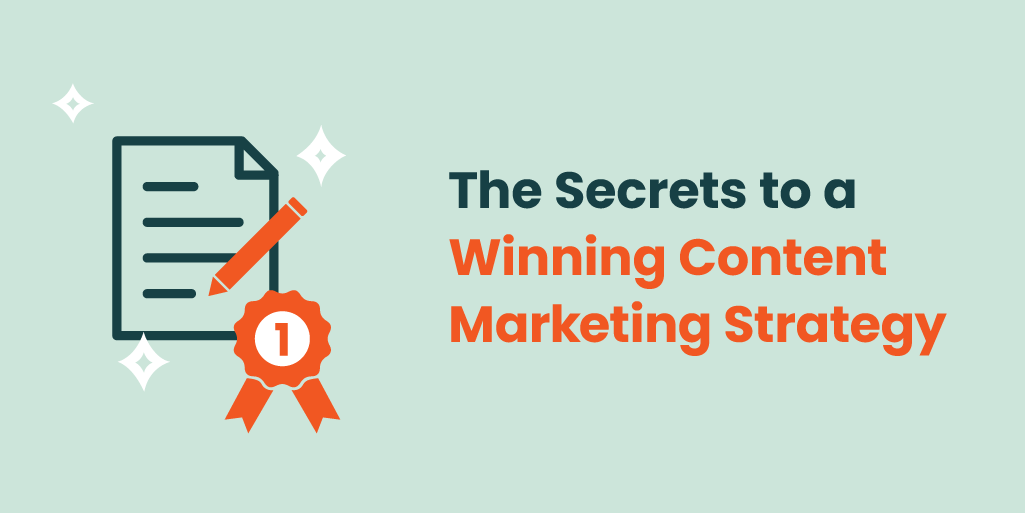There’s no shortage of B2B content. Your competitors are churning it out, creating immense pressure on you to not only keep up, but to publish content that proves you’re the market leader.
But you face a major challenge: making it stand out. In a world full of endless noise, most B2B content barely whispers. Most of it feels like a slightly rewritten version of everything else. That’s not something you can fix with the right content distribution strategy or word count.
So, how do you make your content stand out in an ocean of competition? For starters, it can’t just say something. It needs to actually do something. You need to offer clarity where there’s confusion, spark a shift in how buyers think, and provide expertise that helps them make a decision.
The bar is even higher for tech brands. Your buyers are faced with complex, high-stakes decisions, competing and expensive solutions, and internal pressure to “get it right.” They don’t just need to know what your product can do. They need to understand why it matters and what they risk by doing nothing.
This is why fluffy B2B marketing speak isn’t helpful. They need answers they can bet their next quarter on. If your content gives them that confidence, you’ll earn their trust.
The Good News: B2B Content Consumption is Up
Let’s be clear: content still works. B2B buyers are engaging with it more than ever:
- Edelman and LinkedIn found that most decision-makers and C-level executives spend an hour or more per week consuming thought leadership content.¹
- NetLine reports a 77% increase in B2B content consumption since 2019.²
- C-level executive engagement rose 27% year-over-year, with this group accounting for 13% of total content demand, according to NetLine.³
They’re reading eBooks, white papers, case studies, blog posts, and everything in between. But they’re also getting sharper at spotting content that’s just there to check a box. Only 15% of decision-makers rate the quality of most content they consume as “very good” or “excellent.”1 Why? Obvious ideas dressed up as “insights,” padded intros, recycled points, and now, an ever-increasing flow of AI-generated slop.
AI is a Powerful Ally, But Only If You Set the Standard
AI flourishes when it enhances humans’ work. It’s a great brainstorming tool, a fast way to ensure your brand voice is always consistent, a helpful partner for spotting data trends, and so much more. But there’s a flood of brands depending solely on tools like ChatGPT to create content, and their decreased effort shows. You know the kind: vague, wordy, and without a unique edge. It’s increasingly easy for buyers to spot, easy to ignore, and worst of all, it makes your brand look lazy.
What B2B Buyers Actually Want
B2B buyers are discerning by nature. When they smell AI slop or spot overly-generic “advice,” they tune out. What they want is content that proves you have real, valuable insights about their world, their challenges, and what to do about them.
And in today’s market, that bar has only gotten higher. When budgets are tight, every decision carries more weight and requires a high level of confidence from buyers that they’re investing in the right solution.
That’s why content rooted in real expertise makes such a difference. According to LinkedIn and Edelman’s B2B Thought Leadership Impact Report, decision-makers find content most valuable when it includes original data, clear guidance, relevant case studies, and a distinct point of view.
Here are 5 tactics on how to give B2B buyers the reassurance they need:
- Insight they haven’t seen before
- Example: A fintech company releases a proprietary research report on what’s top of mind for finance leaders, featuring original data from a robust survey.
- Clarity on a complex or timely challenge
- Example: An AI infrastructure provider publishes an educational blog post on how organizations can leverage AI more strategically, instead of just automating basic tasks with tools like ChatGPT.
- A perspective that helps them decide or act
- Example: An Agentic AI startup publishes a guide that compares its customer support solution to traditional chatbots, showing how their product saves money while improving CX.
- Proof that what you’re saying holds water
- Example: A financial planning software provider releases case studies that show how it helps clients transform workforce planning and slash cycle times — with metrics and stakeholder quotes to back it up.
- Structure and directness that make it easy to get what they need and move on
- Example: A SaaS provider publishes a scannable “3-minute buying guide” with a decision tree, key questions to ask vendors, and red flags to avoid.
- Bonus: In addition to helping buyers self-qualify faster, content that’s structured clearly and written in a direct, human tone also performs better in generative AI search results — an important avenue to boost brand visibility as users increasingly turn to AI platforms to get immediate answers without ever clicking a link. (Learn more about optimizing content for AI visibility here.)
If your content doesn’t provide any of these, it doesn’t matter whether it’s 800 words or 5,000.
An 800-word blog post that’s unique and provides real value can be more impactful than a 10-page ebook, if the ebook is merely regurgitating what’s already been said by countless others and doesn’t hold the reader’s attention.
But a 10-page ebook that’s full of helpful insights for prospective buyers, has a strong perspective, and backs it up with powerful case studies can be an invaluable boost to your pipeline that pushes leads down the funnel.
Signs Your B2B Content is Shallow
Take a look at your content. If you see any of these red flags, it’s probably not hitting the mark:
- You’re stating facts without showing why they matter.
- You spend more time setting up the topic than saying anything new about it.
- You land on safe, vague, or obvious conclusions.
- You’re just recapping the status quo instead of bringing a unique POV.
Shallow content might look polished, but it won’t stick. It won’t drive trust. And it sure won’t differentiate your brand.
A Simple Framework to Take Your B2B Content From Filler to Funnel Fuel
Follow these four steps to create content that generates results:
1. Start with a strong POV
- Don’t just explain a topic. Take a position on it. A strong POV tells the reader why they should care and is what makes content memorable.
- Example (weak):
“AI is changing the way companies create content.” - Example (strong):
“AI can provide ideas and help you scale content, but if it’s writing your blogs from scratch, you’re already losing.”
- Example (weak):
2. Make the stakes clear
Why does this topic matter right now? What’s at risk if the reader doesn’t act? If your content doesn’t answer the question “so what?” it won’t just be ignored, it’ll erode your credibility.
3. Provide proof
Use real examples, quotes, stats, or case studies whenever possible. Even a brief anecdote makes it tangible. Without any proof, even good ideas sound like guesses.
4. End with a clear CTA
Tell the reader what to do next, and make it worth their time. Don’t assume they’ll advance through your funnel — guide them towards the next step. For example, you could end a blog post with a CTA to download a detailed guide with more advice on the topic, or a case study that shows how a company put this advice into practice.
The Bottom Line: Depth Wins
Chase insight, not brevity.
Don’t just publish more. Publish with purpose and depth.
And don’t worry if your content is long. Worry if it’s forgettable.
Need help creating content assets that actually grab and hold buyers’ attention? You’re in the right place.
See how our Content Marketing experts uplevel B2B tech brands with content that cuts through the noise.
Sources
- https://www.edelman.com/sites/g/files/aatuss191/files/2024-02/_2024%20Edelman-LinkedIn%20B2B%20Thought%20Leadership%20Impact%20Report%20Final.pdf?utm_source=chatgpt.com
- https://www.netline.com/netline002n/?d=glconsumption24&k=240401nlwccr/
- https://s3.amazonaws.com/media.mediapost.com/uploads/NETLINE_2025_b2B.pdf
About the Author
Andres is a content marketing pro who helps B2B tech brands drive growth through creative campaigns. At Firebrand, Andres is focused on content creation, strategy, messaging, and performance analysis.
Before joining Firebrand, Andres led content marketing, copywriting, and PR efforts for various B2B brands throughout the Americas. Connect with Andres here.





